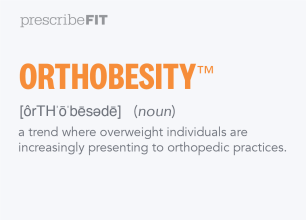Obesity remains one of the most complex and costly health challenges facing the U.S. healthcare system. It contributes to cardiovascular disease, Type 2 diabetes, joint damage, orthopedic pain, sleep apnea, and more.
Traditional episodic care models often fall short of producing meaningful and lasting outcomes. That’s where remote patient monitoring (RPM) — under CPT codes 99453, 99454, 99457, and 99458 — comes into its own: a scalable, evidence-based strategy that bridges the clinic and everyday life.
The Evidence: Continuous Care Drives Better Outcomes
A key analysis featured on our site (in “Why Generic Weight Loss Advice Doesn’t Work”) draws on the findings at Duke University and other institutions which show that standard, one-time advice to “lose weight” or “exercise more” rarely leads to sustainable change. 
Specifically, the research shows that patients receiving structured support — including digital monitoring, regular outreach, and sustained follow-up — have significantly better outcomes than those left with generic guidance. 
At Prescribe FIT, we’ve mirrored these findings: when patients are equipped with connected devices and receive ongoing contact from a coordinated care team, engagement rises, adherence improves, and meaningful health changes follow.
Why Physicians and Care Teams Matter
RPM isn’t just about the hardware and data — it’s about people. The CPT codes for RPM reflect this:
- CPT 99453 covers the setup and patient education — a crucial step for onboarding patients effectively.
- CPT 99454 supports the provision of connected devices and daily data transmission.
- CPT 99457 and 99458 reimburse for the monthly, interactive management that turns that data into action.
This structure acknowledges that the physician provides oversight and clinical direction, while a team of care coordinators (health coaches, medical assistants, outreach staff) ensures continuous engagement, troubleshooting, and behavioral support.
With overweight and obese patients, the biggest barrier is consistency and accountability. RPM enables both: it connects the physician-led strategy to daily behavior, and the care team provides the touchpoints that reinforce the patient’s commitment.
Real-World Results: Proof That It Works
At Prescribe FIT, our outcomes speak clearly:
- Patients achieve an average weight loss of 5.4%+ over the first 16 weeks
- Patients have graduated with weight loss of over 100lbs and 20 𝑘𝑔/𝑚2 BMI reductions
- Significant improvements in blood pressure, A1C, mobility and pain scores
- High retention and engagement rates based on a structured outreach and monitoring program
These outcomes not only reflect improved patient health, but also translate into lower risk of complications, fewer hospitalizations, fewer specialist referrals — all metrics that payors care about.
Why RPM for Obesity Is Covered — and Why It Works
Remote patient monitoring is not experimental — it’s reimbursable care. Medicare, Medicaid (in most states), and the majority of commercial payors reimburse for the four principal RPM CPT codes (99453, 99454, 99457, 99458). These codes were created to support proactive, longitudinal management of chronic conditions — including overweight and obesity with its cascade of comorbidities.
Coverage recognizes that obesity is not a short-term issue, and that effective management needs continuous monitoring, data-driven insights, and human accountability between visits. Through connected devices and ongoing outreach, physicians and care teams can identify trends earlier, adjust interventions accordingly, and keep patients moving toward sustainable improvement.
By integrating RPM into weight management and obesity care, providers aren’t just adding cost — they’re avoiding downstream cost from hypertension, diabetes, joint replacements, and hospitalizations. The reimbursement structure supports this because it aligns for everyone: better outcomes for patients, stronger care relationships for physicians, and reduced long-term spend for payors.
In short: RPM is covered because it works — clinically, operationally, and economically.
Published on October 29, 2023

